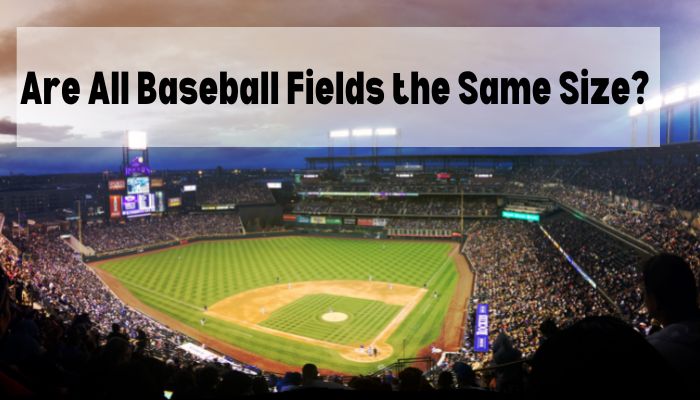Baseball is a popular game not just in the United States but across the globe and at any age. Baseball, a competitive sport with a long and illustrious history, is appreciated by fans of all demographics and walks of life.
Imagine that you are a newcomer to the baseball world and follow the sport closely. After going to a few different games, you will realize that each stadium’s dimensions are different. The thought that keeps running through your mind is, “Are All Baseball Fields the Same Size?”
To answer your question, the correct response is “no.” Baseball diamonds come in a wide range of sizes. Because of the unique traditions and conventions, field dimensions have been and tend to be arbitrary. However, they must adhere to specific rules set down by MLB.
Baseball Field’s History
Many baseball fans count attending a Major League game as a life goal. In addition to the camaraderie you will feel with other baseball fans at a live match, you will also get an up-close look at the game’s nuances.
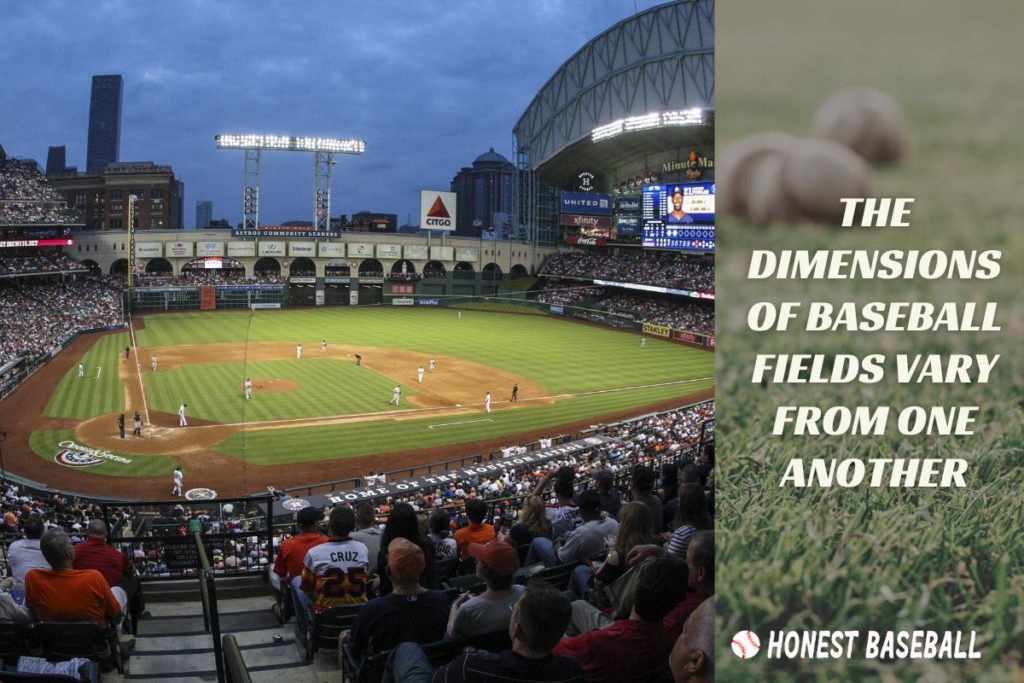
Even while many baseball diamonds seem the same at first glance, sometimes you may find one with a fascinating shape. However, do all baseball fields measure the same size, despite their seeming similarity?
So the question is, why are baseball fields not standardized? First off, a significant portion of this can be traced back to the historical construction practices used for baseball diamonds and stadiums. Neither outfield fences nor specific playing areas were used during baseball’s earliest days.
Fields were built in easily accessible open areas so players could make the most of their space. Many playing areas were designed to mimic the geometry of nearby streets and structures.
As baseball grew in popularity, fences were ultimately mandated by the sport’s governing bodies as a necessity for the sport’s standardization.
Older baseball stadiums like Fenway Park had a problem since they needed substantial renovations to keep up with the trends.
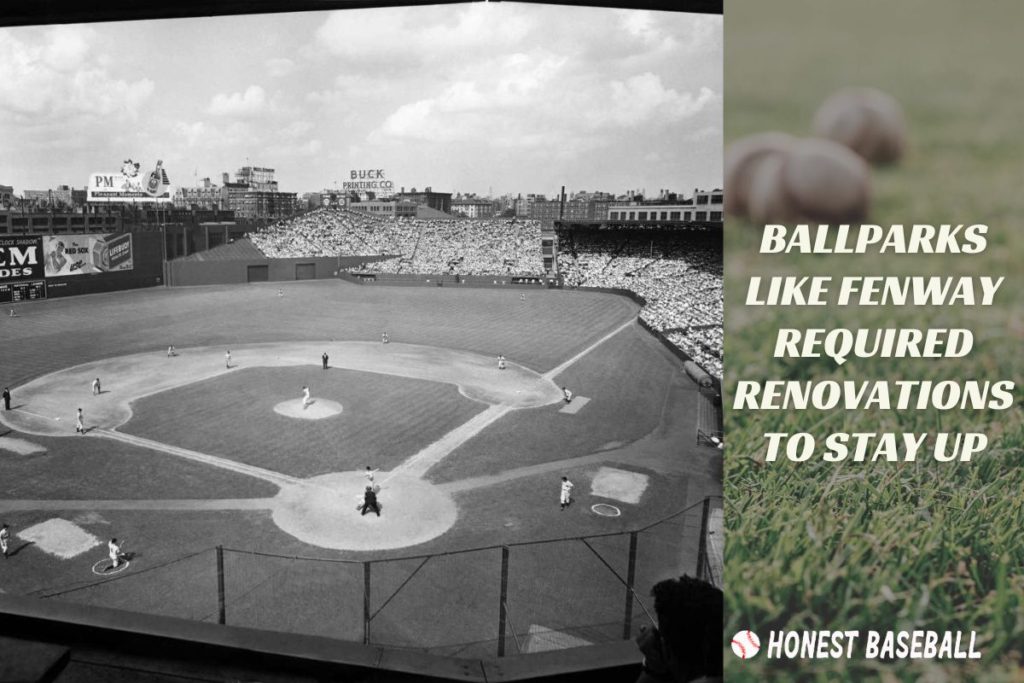
After realizing that compulsory field standardization was impractical, MLB allowed fields of varying shapes and sizes to remain.
MLB permitted stadiums to have different-sized fields but created criteria for utilizing them. This made the competition equal for all sides and made it possible to play more conventional games despite the uneven playing ground.
Are you a baseball enthusiast? Can you name the old baseball stadiums which carry history for years? I bet you cannot name these 27 Oldest MLB Stadiums Still in Use in 2022.
Why CanNot Every Baseball Diamond Be The Same Size?
It is common knowledge that there is a wide range of sizes and layouts. People ask why Yankee Stadium’s right-field line is 314 feet while Seattle’s is 326. Minor and the major leagues have specified outfield dimensions, although ballparks are different.
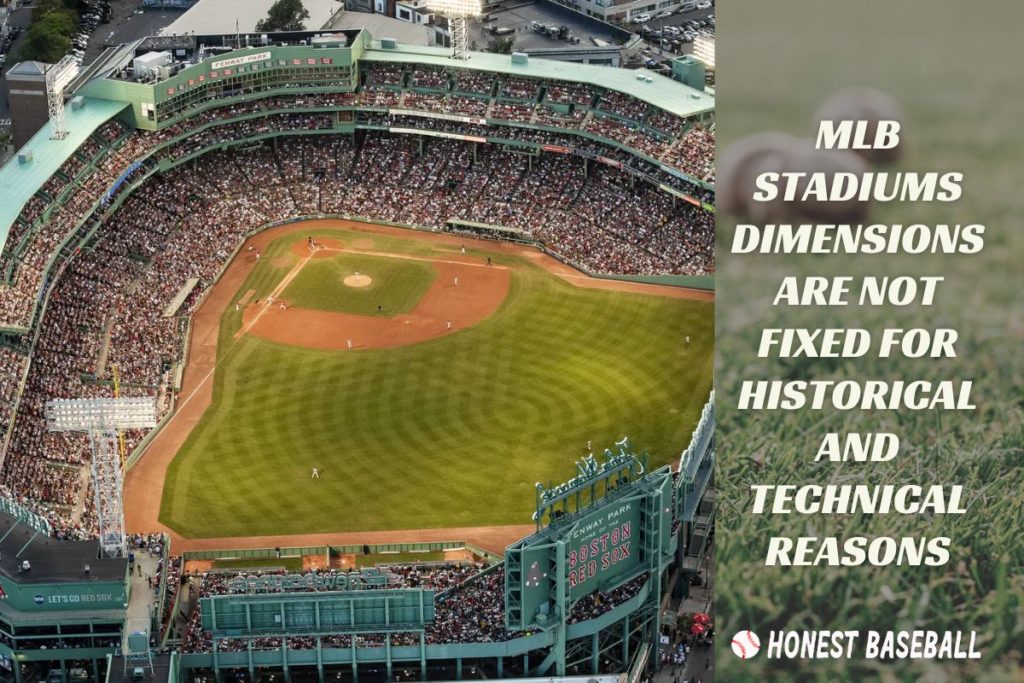
Before June 1, 1958, MLB facilities required wider outfields, so the space between the right and left field foul posts and home plate was 250 feet.
However, opening a stadium beyond that date necessitates a field with greater dimensions—about 400 feet in length and 325 feet along each foul line.
There is no universal standard for the dimensions of ballparks in the major leagues, which is valid for historical and technical reasons. It is not because there are no standards for field design; instead, the lengths between outfield fences and other minor elements vary widely.
To begin, let us look at the ballparks’ current condition. All Major League Baseball grounds seem similar from the outside. However, there are several distinct designs.
Outfield fences did not exist in the early stages of the construction of fields. Much like the outfield fence of a typical recreational softball field, this one was simply at the point where the ball ran out of play. No one hit a home run over the fence since it was always possible to get the ball back.
Baseball grew more popular and more standardized over time. This led to the ultimate installation of fences, although physical limits hindered the complete uniformity of the game.
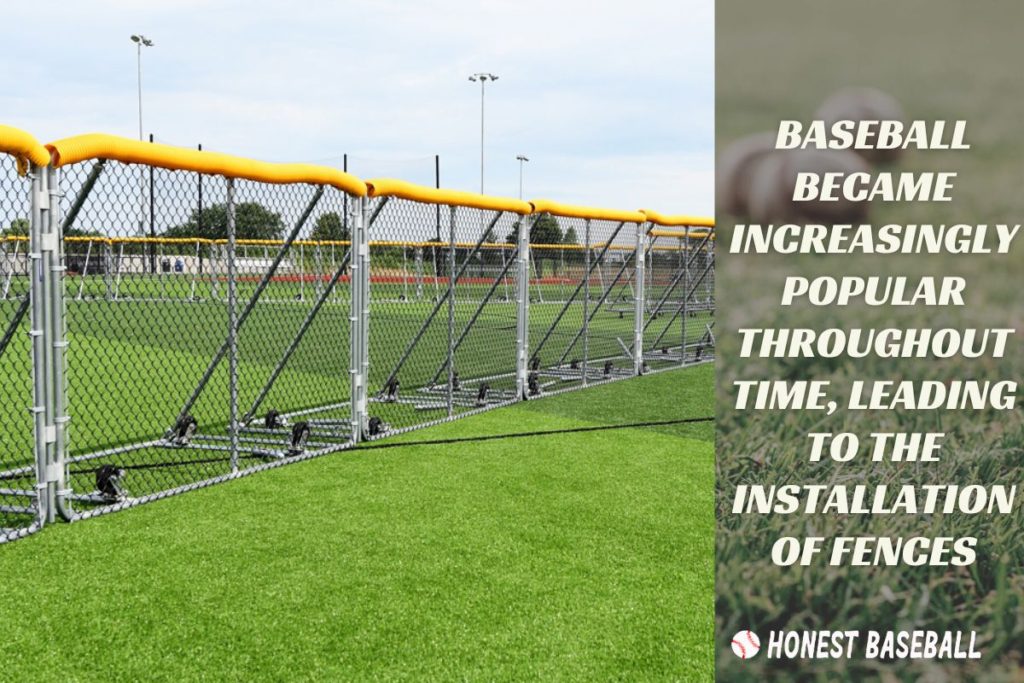
Fenway Park, home of the Boston Red Sox (formerly the Boston Braves), features a short left field to make room for Landsdowne Street.
Because none of them were feasible, the owners of Major League Baseball concluded that they should let regional differences continue. This has worked out to their advantage since some areas have specific standards or measurements that must be adhered to.
However, there is only so much room for stadiums to be weird. Some clubs used to change the size of their fields, but nowadays, it is mainly only to add seats, upgrade stadium facilities, or build new stadiums.
The commissioner’s office must authorize any changes to an existing stadium or the construction of a new one. Some dimensions are set, such as the pitcher’s mound, the distance between bases, and stadium orientation. They are not changeable.
Can you make a pitcher's mound? Here is a step-by-step guide to help you in the process.
After 1993, teams have been trying to design stadiums that are slightly different from the norm. They hope it will offer them a more significant edge playing at home.
Baseball Fields Guidelines
The MLB currently requires both specific minimum and maximum sizes for all contemporary baseball fields. However, in the past, fields could be any size. Look at these national standards for field sizes throughout the United States.
Infield and Outfield Guidelines
Every infield must be a perfect square with equal lengths in each direction, totaling 90 feet. Outfields are the regions beyond the infield and the catcher’s box. When setting up a baseball field, it is important to make sure that the home plate and the bases are on a level surface.
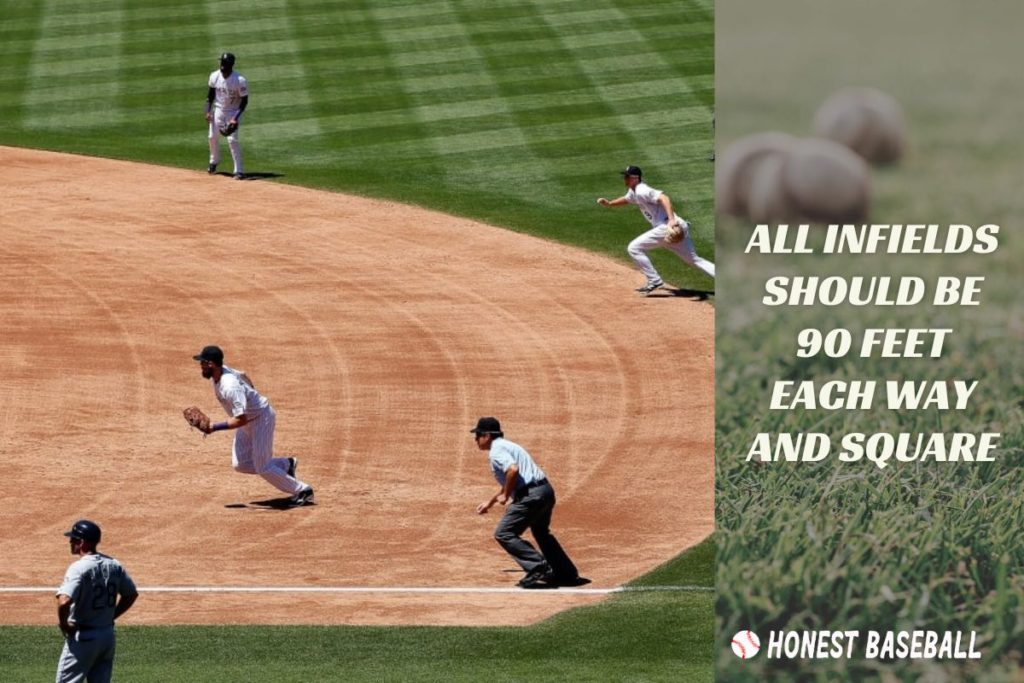
Fencing
Stadiums have never had fences, but starting in 1958, MLB regulations required that all new fields have at least a chain-link fence around them. There is a possibility that some teams may be given some wiggle room concerning these criteria, but this will be subject to approval from the MLB.
For instance, there can not be any obstructions in the right or left base if the distance from the home plate is less than 325 feet. It is recommended that a precise 400-foot distance be established from the home plate to the nearest point of the center field barrier.
The Pitcher’s Plate
The rubber plate used by the pitcher is often whitened to ensure uniformity throughout each game. The typical measurements are 24 inches in length and 6 inches in width. 60 feet separate the pitcher’s plate from the home plate, and the pitcher’s plate is higher than the home plate.
The pitcher’s plate is generally 18 inches from the mount’s center, with an enclosing height of five feet and 34 inches. This amount must also be incorporated into an 18-foot-circumference circle. The last component of the installation is a slant that sits six inches above home plate for the pitcher.
Home plates
Like the pitcher’s plate, home plates are often constructed of white rubber. They begin as a square of 17 inches on a side, but after having two corners cut off, the remaining sides are closer to 8 1/2 inches in length. After that, the leftover edges are lengthened to 12 inches and angled at a right angle.

Owners of baseball fields are responsible for positioning home plate such that its rear edge is 127 feet from second base.
The home plate has a 17-inch face that must be turned toward the pitcher and 12-inch sides that run perpendicular to the first- and third-base lines.
Youth Baseball Field Size
In youth baseball events, the field’s size is determined by several factors. Baseball fields around the US differ in size, something I have seen as a player, spectator, or coach visiting parks across the country.
It is not uncommon for young baseball players’ preferences to change drastically once they enter the professional ranks.
Baseball Field Sizes for Ages 7 to 14
Kids often start getting their mitts filthy in baseball between the ages of 7 and 14. As they become older, the sizes of their fields change.
Baseball Fields for Ages 7-10
The foul lines on these fields are typically between 150 and 170 feet. The central field depth of such fields may sometimes grow while the radii of the outside fields stay constant. Either one works well for baseball diamonds.
Baseball Fields for Ages 11-12
The fields of this age group are often deeper than those of the previous one. As of now, 190 feet is the bare minimum for foul lines. It is also possible for the field’s dimensions to shift as the fence goes around the perimeter, but this is less common than in the former instance.
Baseball Fields for Ages 13-14
A lot of players start to build the abilities they will need to succeed at the high school level at this point. The minimum height for fences around the foul lines is 240 feet. These fields might be different sizes around the baseball diamond, or the fence could be permanent.
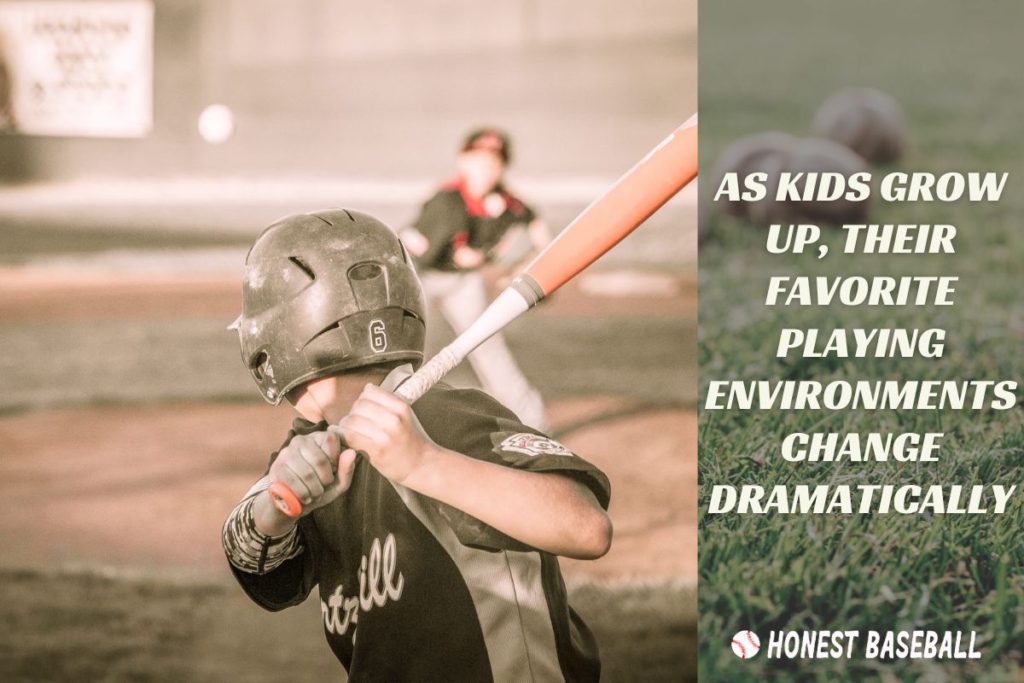
High School Baseball Field Sizes
High school baseball diamonds are the same as big league fields but are usually shorter.
Typical dimensions for a high school baseball field: 350 feet down the center field as well as 300 feet on each of the four lines. That seems like it would be a great high school baseball game.
High school baseball has strict rules that make home runs almost impossible.
What is a home run, actually? How to hit a perfect home run? Here are 4 drills that will help you hit a home run.
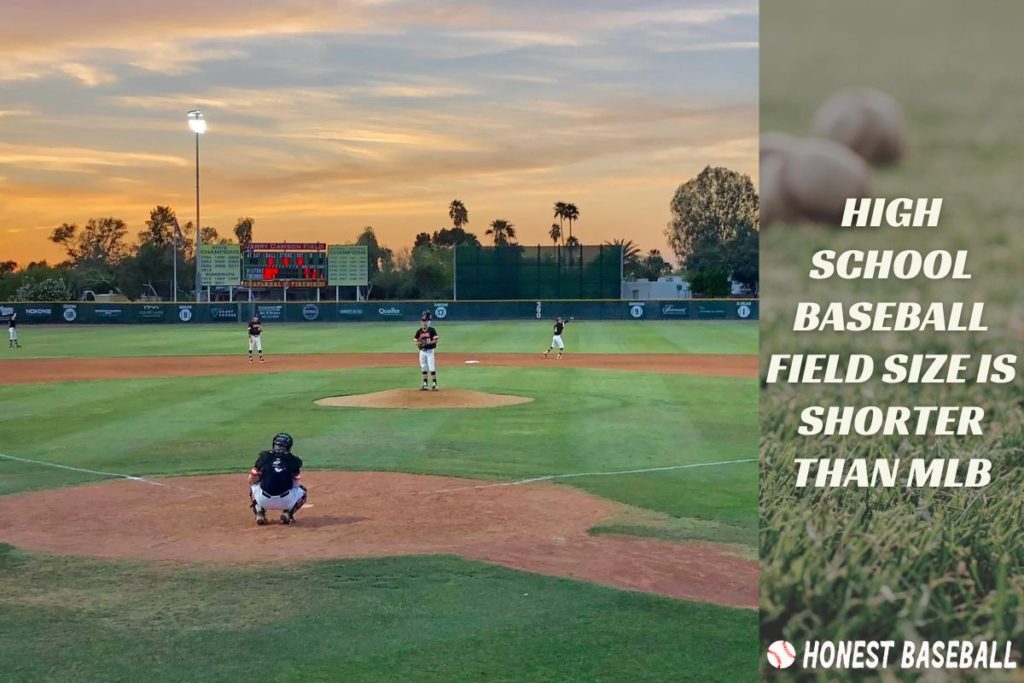
Baseball Field Design at High School Level
It does not matter whether you play baseball in high school, college, the Babe Ruth League, or the pro leagues; as you go around the bases, you will cover the same amount of distance. There are variations in the outfields, despite all standard infields adhering to the precise specifications required for that level of play.
The Little League and the Pony League baseball fields are shorter, with 60- and 75-foot baselines.
How long does high school baseball last? Know it all and see if you have the courage and stamina.
Baseball Diamonds
The distance from home to second base is 180 feet on a regulation high school baseball field, with a base distance of 90 feet. There is a space of 127 feet, 3 3/8 inches between the back of the home plate and the second base when measured along the length of the infield.
The distance between the first and third base is exactly that long. The pitcher’s mound is a high 18-foot circle with its center 60 feet, 6 inches from home plate. In comparison to the surface of the home plate, the height of a standard mound is ten and a half inches.
Outfields
Different ballparks have different histories for allowing home runs or being difficult for power hitters because of the different sizes of their outfields. The outfield is the area beyond the infield and before the third baseline.
Foul lines may be longer but should stretch at least 325 feet between the home plate and the pole marker.
Other Measurements
In addition, some regulations restrict the dimensions of the plates used on the field. The diameter of the home plate is 17 inches, while the dimensions of the rubber used by the pitcher are 24 inches by 6 inches.
National Federation of State High School Associations (NFSHS) suggests positioning the on-deck circle 37 feet away from home plate and to the side if space permits. It indicates that there should be 60 feet between the foul line and any obstructions, like dugouts.
Tee Ball Field Sizes
Let us speak about tee-ball, as it is often the earliest age kids can play baseball. Tee ball is a variation of baseball in which the pitcher does not deliver the ball to the batter. Alternatively, it is set up at home plate on a tee that does not move.
Kids play tee-balls as young as four and as old as six, which is an excellent method to ease them into baseball.
Tee-ball bases are often positioned 50 feet apart, and no outfield barrier exists. Now, all we need to do is convince the children to run in the right way.
Tee ball, like Muhl ball can be the best alternative for you to get started if you are a novice at the game of baseball. You can check out the price if you made up your mind to buy one.
Little League Field Sizes
Little League is the next level up from tee-ball, and it features players of all ages, all the way up to high school. For discussion, I will say that players on the Little League pitch must be between the ages of seven and twelve.

The usual dimensions for a Little League field are 60 feet in length from home plate to the pitcher’s mound and 46 feet in width at the pitching rubber.
The minimum distance from the home plate to the home run wall is 200 feet, and the maximum length is 275 feet.
Kids as young as 11 or 12 could be able to play at what is considered the intermediate stage. At this point in the game, the distance between the pitcher’s mound and the home plate has to be increased to 50 feet, while the distance between the bases has increased to 70 feet.
Major League Baseball Sizes
The minimum distance between home plate and the closest portion of the fence in Major League Baseball parks was established in 1958. The distance between the center field fence and the field is typically approximately 400 feet.
No two sections of the Major Leagues are the same. There is no overlap between the various fields. Each field receives its personality and identity from the other dimensions.

Every baseball diamond in Major League Baseball (MLB) has a somewhat distinct configuration of the stands and the outfield barrier for the home run.
The quantity of foul ground (playable territory beyond the field’s lines for popups, passed balls, etc.) differs. In specific stadiums, the spectators will be situated near the action, while others will be farther back.
Pitchers prefer ballparks with more foul ground because more outs may be achieved on popped-up balls.
Do you know what is a foul ball? It is an unforgivable violation that you should be aware of.
Home Run Fence has few restrictions governing how far back its arch must be. Fenway Park in Boston has a shorter right-field home run barrier (302 feet) than Wrigley Field in Chicago (353 feet).
The distance to centerfield in Houston’s stadium is 436 feet, but it is just 390 feet in Boston.
At Boston’s Fenway Park, the left field wall is about 310 feet, the smallest distance for a wall. The only drawback is that it stands 37 feet tall!
NCAA Baseball Field Regulations
The mission of the National Collegiate Athletic Association, an organization run by its members, is to ensure collegiate athletes’ safety and future success. The following is a list of some of the rules that the NCAA has placed on baseball fields:
1. The infield must be square and 90 feet long. The second base serves as one side of the 90-foot square, while the first and third are measured from their respective backlines.
Measurements must be taken from the highest point of the plate, which is the back. The outfield is defined as the territory beyond the infield, along two foul lines drawn by elongating the two extreme perimeter edges of the square.
2. Outfield fences should be at least 330 feet from the home plate’s apex to each foul pole, 375 feet from the foul line to the right and left centers, and 400 feet from the center to the outfield corners.
The right-center field fence, the left-center field fence, and the straight-away center field fence should all be rounded to the specified lengths. When new foul poles are constructed, as well as when old foul poles are repainted, they are to be neon yellow.
3. It is strongly suggested that a strong and durable outfield fence completely encompasses the outfield. A permanent fence needs to be between 6 and 8 feet at the very least.
a) When a snow fence is necessary, it must be constructed with the posts on the outside and the tops of each post lower than the fence’s highest point. Boards measuring 1 by 4 inches should be flush with the top of the snow fence to create a strong connection. Snow fences are strongly discouraged because of the risk of injury they provide.
b) It is difficult to tell whether a ball is caught inside the field of play because of the elastic nylon windscreen-type barrier, which is neither substantial nor secure. For the defensive player to have a “legal catch,” they must possess the ball inside the field of play’s boundary barrier.
The catch is illegal if the player’s foot touches the barrier (stepping on it, going over it, or leaning against it). All other regulations regarding a lawful catch should be identical to Rule b, which defines a catch.
Honest Note: Remember that a defensive player can legally make a catch even if the barrier is pulled back as long as they do not use either foot to press back or down on the fence. The out-of-bounds fence is likewise subject to this restriction.
4. There must be a good bullpen for each team at every college baseball field, and it must be built to the precise specifications of the mound.
What Are the Factors and How Do They Affect the Dimensions of Baseball Diamonds?
Fields are given specific dimensions as a consequence of a variety of factors. We will check all the various variables at play in each baseball division that change Ballparks’ size.
The Infield’s Dimensions
This consideration is perhaps the most important one in determining how baseball fields are laid out and constructed. It is very uncommon for young baseball games to take place on wide fields or with extremely deep fences. However, shallower fences are more common.
The kid baseball game becomes considerably more exciting when the fences are lowered to a lower height than at Major League ballparks. Younger players may make more defensive plays, which is a positive for everyone.
Fences Improve the Game Defensively
Younger and less athletic players often take the field in defensive positions in youth baseball. Most of the time, the ball does go into the outfield gaps. To get to the ball, defenders must run far on large fields or grounds with lengthy fences. Outfielders have a tough challenge when faced with this situation.
When baseballs are hit into space, acceptable fence length allows for a valid play to be made by the defense. Therefore, it is unusual for players at this level to smash a triple or even a home run while still within the park.
Competitive Age Group
Youth baseball is for kids between the ages of 7 and 14, with 14 being the limit for high school ball.
At age 8, kids are just starting to learn how to play baseball, so putting up fence posts may make the sport more exciting for both teams.
Pitch Distance
The pitching distance in Little League Baseball is 46 feet, while in Major League Baseball, it is 60 feet, 6 inches. Young kids lack the arm strength to toss the ball far or with much force. Therefore the game begins at a shorter distance.
As their muscles develop, they start hurling the ball with more force as they become older. It would be very challenging to strike the ball if they maintained a distance of 46 feet at all times. The hitter’s response time is the primary factor in determining the pitching rubber’s location.
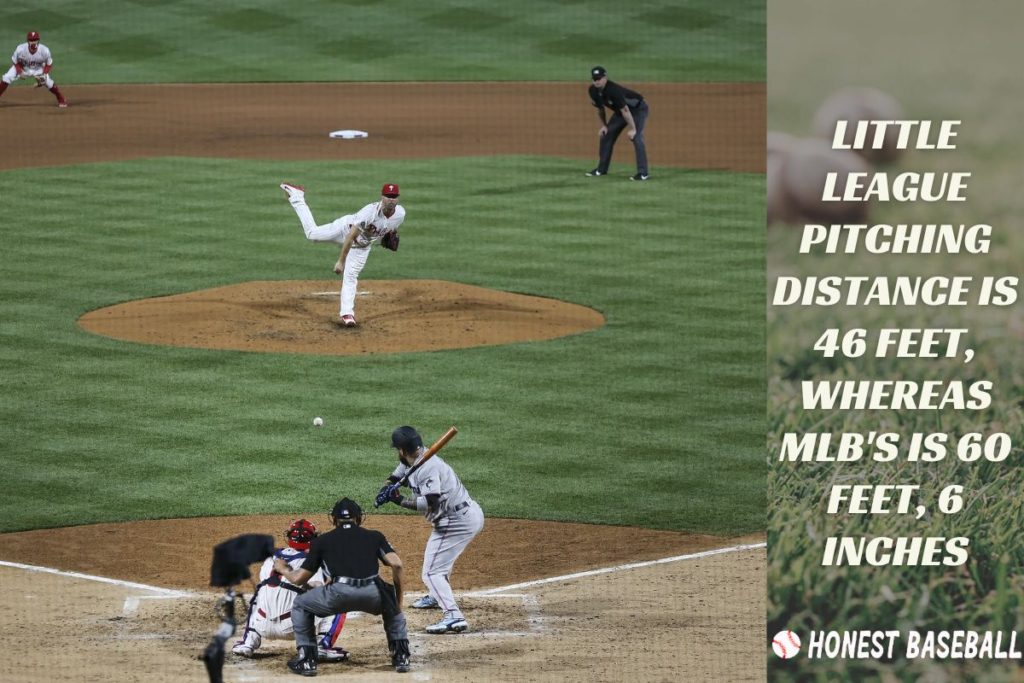
Base Paths
Base paths in Little League are 60 feet in length, making the game more feasible for youth guys who are not as solid or speedy. You can not have an overly large infield since the infielders need to be capable of making the throw from first to third. The distance between the bases increases from sixty to seventy to eighty to ninety feet as the youngsters advance in age.
Home Run Fence
Home runs are among the most exciting moments in a baseball game to watch and be a part of. At the same time, many Little League grounds lack suitable fences owing to cost and other issues, those that do often have them set at a distance of about 200 feet.
This makes for a great field size for youngsters to run about and play defense on but it also allows the stronger hitters to get close to the fence.
Middle school athletic grounds often have a fence between 250 and 300 feet. On most fields, the depth of the centerfield is much greater than that of the corners due to the arching shape of the fence.
You should expect a high school field to be roughly the same size as a professional one, which means 300 feet along the lines and 400 feet along the center field.
Are Minor League Baseball Field Dimensions Smaller?
Compared to those used in the big league, baseball fields used in the minor league are much smaller. When you advance in level, the significance of the field increases.
Nevertheless, Triple-A venues are far larger than major league teams. Additionally, Double A is a little more compact. The whole league utilizes a variety of different wall heights, as well as different outfield dimensions.
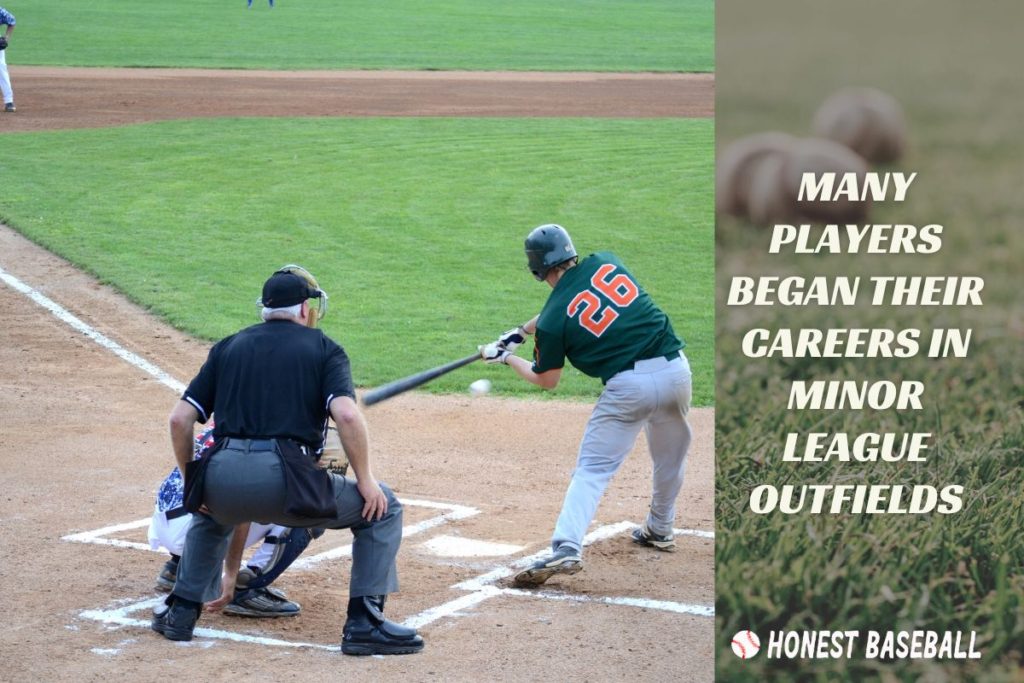
The minor league stadiums all have dimensions that are consistent with one another. However, the primary reason is that many are brand new or recently rebuilt. However, the older ones have unique characteristics and strive to imitate the size of baseball fields used in big league games.
Many players consider the outfields of minor league baseball to be the ideal starting point for their baseball careers. It is a massive aid in the player development process to gauge the potential more precisely.
Nevertheless, the game’s fundamental laws are considered, like the infield size and distance between the bases.
Another important distinction that many people are unable to make head or tail of is the configuration of the chairs. Parks hosting minor league baseball games typically have a capacity of between 5,000 and 10,000 fans.
This differs from what you will see at the stadiums hosting Major League Baseball games. The grounds are packed to capacity every night with fans who have come to watch minor league games. In addition to it, the bases are each 90 feet in length. However, none of these areas are identical to one another.
What is the Biggest Major League Ballpark?
Chase Field
The Arizona Diamondbacks’ Chase Field features baseball’s largest and most challenging home run. Left-center and right-center power alleys are 374 feet, while centerfield is 413 feet.
Due to the tall wall in the center field, this is the most challenging field to hit a home run.
Which Major League Ballpark Has the Smallest Diamond?
Great American Ballpark
At Great American Ballpark, there are several home runs hit. The length of the powerful allies is 389 feet. However, besides the left field fence, the walls are very short. This field seems to be a home run for the ball.
Extra bases are harder to get at this park because the outfielders can find the ball rapidly. After all, the power alleys are shorter.
What is the Oldest Major League Ballpark?
Fenway Park
Fenway Park first opened its doors in 1912 and remains in operation to this day. Fenway Park can hold 37,755 people and is famous primarily due to the 37-foot green monster on the left field.
The antiquity of Fenway Park is the primary factor contributing to the park’s diminutive size.
Frequently Asked Question
1. Why Are Baseball Fields Different Sizes?
There is no universal standard for the dimensions of ballparks in the major leagues, and there is no plan to implement one. It is not because there are no standards for field design; instead, the lengths between outfield fences and other minor elements vary widely.
2. Why Are MLB Fields Different Sizes?
Professional ballparks exist in diverse forms and sizes, often owing to the municipal block’s layout on which they were constructed. There is considerable diversity in the fence heights throughout all 30 stadiums’ left, center, and right fields.
3. Why Are Baseball Fields Bigger Than Softball Fields?
Softball fields have a plate-to-second base distance of little over 84 feet, whereas baseball fields have a distance of 127 feet. There is less room between the pitcher’s mound and home plate. As a result, women not only play on a smaller field but also with a larger ball.
4. How Big Is a Major League Baseball Field?
On each of its sides, the diamond has a measurement of 90 feet. There are at least 400 feet from home plate to centerfield. The home plate is at least 325 feet away from the closest fence. The foul lines are 320 feet or more in length.
4. Are All Professional Baseball Fields the Same Size?
There are differences in the league’s outfield dimensions and wall heights, but not in the actual stadium. There are a total of 30 stadiums in the MLB. They are completely unique from one another.
Final Words
That settles it, then the answer to the question “Are All Baseball Fields the Same Size.” Several variables determine the size of baseball fields, but mainly by the level of competition. The size of baseball fields and bases varies significantly at the youth level, from league to league and even age group to age group.
It is becoming easier to draw parallels between the high school level, college, and professional levels, like MLB.
This is because all the other measurements are also the same. When comparing the Major League level to the high school level, there are no differences in the dimensions of the pitcher’s mound or the bases.
Whether the crowd size or the number of home runs scored on any night, every baseball park has a distinct atmosphere.
Many people like visiting several ballparks nationwide, each with its vibe and personality.
You may Also Be Interested In
What Is a Good ERA in Baseball? | Critical Facts Explained
How Many Innings Are There In A Baseball Game (According To 2022)
6 4 3 Double Play Forensics – All Exciting Baseball Plays Explained!
How Many Baseballs Are Used In A Game? Surprising Facts!

Hello everyone. My name is Jason Butler, and I live in California, America. I was a professional AAA Minor League Baseball player. I lost my chance of playing MLB for injury issues, but I did not lose my love for baseball. I attended the coaching training program and am now working as a coach in a small school in San Diego.
I always love to share my experience and knowledge if that can help you. Play baseball, and stay fit.
